6 Things Every Woman Should Know About Breast Cancer

Every woman should read this. In fact, everyone who cares about a woman should, too.
Do you struggle with fear of a breast cancer diagnosis? I’m going to help you with that today.
In this article:
I’m a cancer researcher and have been all over the world learning about what works outside of chemo/radiation and why there’s such a chokehold on the cancer industry so that anything outside of “cutting, burning, and poisoning” isn't considered the norm. I’ve met many, many cancer patients choosing “Standard of Care,” and many others opting out of it for other treatments or trying to recover from the devastating effects of surgery, chemo, and radiation.
Let’s start with the good news. 80 percent of breast lumps are NOT cancerous. In this post, I’m going to share quite a few things that 99 percent of women don’t know about how to avoid breast cancer and how to put it in perspective and not live in mortal fear of it. Everything I’m sharing is backed by research, is easy and painless, and your oncologist isn’t likely to tell you about any of them.
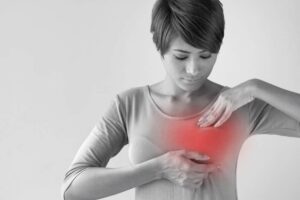
80% of breast lumps are actually not cancerous.
The bad news? Breast cancer is the leading cause of death for women age 40 to 55. Under 45, breast cancers tend to be more aggressive and have lower recovery rates. Further, almost 80% of women diagnosed with breast cancer have no family history of breast cancer.1
No wonder women are scared. No wonder I get asked what I would do if I got diagnosed. No wonder we default to what smart people in white coats offer, even if it is cutting (surgery), burning (radiation), or poisoning (chemotherapy) with a Stage 0 or Stage 1 diagnosis, when it's likely that the body will break down and metabolize that growth on its own, especially with dietary changes and holistic support.
Let me reiterate that I honor anyone’s right to decide a course of action with regards to every aspect of their own health. Nothing I say here should be construed as medical advice. I’ve studied with cutting-edge docs in holistic cancer treatment and detox centers around the world for many years, and I feel strongly that we should be educated about risks and benefits before we panic, or undergo unnecessary or harmful diagnostic or treatment procedures. I also feel that a cancer patient has time to stop, breathe, learn, consider, pray, and decide in a place more grounded than in the fear vibration.
Diagnostic Options
Mammograms
Why do doctors prescribe mammograms? Mammography is an $8 billion industry, and their offices are heavily invested.2 The cancer industry certainly isn’t motivated to expose statistics that support the claim that this form of breast cancer screening might have caused net harm for up to 10 years after the start of screening.3
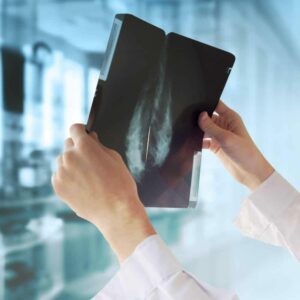
Mammography may have caused net harm for up to 10 years after the start of screening
That’s right, mammography may have caused more cancer than it's helped. Advancements in radiography means that screening can detect very tiny clusters of aberrant cells, “tumors” like DCIS (ductal carcinoma in situ) that are contained, non-invasive, would never grow and become a problem in the woman’s lifetime. In fact, the body routinely metabolizes them.
A 2012 study published in The New England Journal of Medicine concluded that over the last 30 years, mammograms have overdiagnosed 1.3 million women in the United States.4
The Canadian National Breast Screening Study found that after 25 years of follow-up, 106 of 484 screen-detected cancers (21.9%) were overdiagnosed. (In other words, the cancer was so early-stage it should not have been treated, and therefore a woman is guided to toxic treatments that could harm her long-term health and in some cases even kill her.)
Most of these overdiagnosed women received some kind of treatment, such as unnecessary biopsies, lumpectomies, mastectomies, or burning gamma rays whose radioactive isotopes continue to burn for many years, causing high likelihood of secondary cancers. The patient may go through chemotherapy that puts heavy metals and deadly toxins throughout body systems for life.
And then there’s the radiation exposure from mammography itself, which cumulatively (and ironically) increases breast cancer risk, especially in younger women. The breast cancer industry’s leaders raised the recommended mammogram age from 40 to 50 for this reason, but this may not be enough.
I interviewed Dr. Felice Gersh, M.D., about breast cancer and mammography in two different Vibe podcast episodes (114 and 130). As she pointed out, "When [you] look at the issue of harm versus benefit [of mammography], then you’re looking at issues of false positives--over diagnosing cancers which would never become clinically evident or kill anyone. Unnecessary biopsies (which actually do create harm) and biopsies are actually listed in the Gail model of predicting breast cancer risk. Having multiple biopsies of the breast is actually considered a risk factor because you’re creating inflammation and damage every time you start biopsying a breast."
Dr. Samuel Epstein, one of the world's top cancer experts, noted, "The premenopausal breast is highly sensitive to radiation, each 1 rad exposure increasing breast cancer risk by about 1 percent, with a cumulative 10 percent increased risk for each breast over a decade's screening."5
Experts are starting to recommend AGAINST women in their 40s receiving annual mammograms (unless they have the BRCA1 gene, highly predisposed to breast cancer).
The idea that standard oncology has put forward, that “early detection” is categorically a positive thing, has compounded the problem. Early detection means that DCIS and tiny Stage 0 and Stage 1 cancers the body metabolizes on its own on a regular basis are screened, and the patient is sent to invasive, toxic, devastating treatments.
This trend has artificially inflated survival rates, just one of the ways the oncology industry “pads” its numbers, because they are boasting survivors who would have survived anyway, without treatment, because they were entirely healthy.
I confess I have never had a mammogram and do not plan to in the future. I choose a present and future without radiation. I feel confident in this decision mostly because my lifestyle is very disease preventive. I have had thermographic scans, however, and will do that periodically.
Thermography
When my mother went on a mission to Italy for her church, she refused mammography. She’d studied how the radiation exposure in the mammogram is high, and some theorize that smashing a tumor in the breast may cause it to spread. She finally negotiated the ability to use thermography, which is painless, non-invasive, and radiation-free.
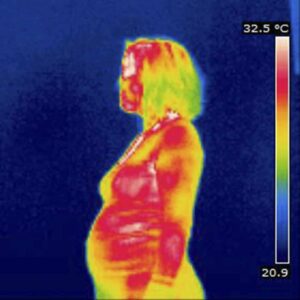
Thermography is a safer alternative to mammography, and can be used on mothers and mothers-to-be
Thermography is safe for pregnant women, nursing mothers, and women with implants. It’s painless and does not flatten the breasts. And very importantly, it’s a diagnostic tool available to women 25 to 39 years old. The high-res, ultrasensitive infrared camera detects minute changes in vascular tissue. Warm areas stand out and can be tracked over a period of time.
You can find this technology in many areas of the country now.
Thermography vs. Mammography: Personal Choice
In an interview I did with former Mayo Clinic Medical Editor Dr. Robert Sheeler, he explained that breast imaging and detection isn't a one-size-fits-all conversation, and that both thermography and mammography have their drawbacks and advantages, and that there are new technologies on the horizon.
When weighing what kinds of testing (and treatment) to get for any given medical situation, he says, he assesses it in a 5-part "algorithm" of safety, effectiveness, cost/benefit, availability, and (insurance) reimbursement: "I like to apply all those criteria rather than saying I'm for one thing or against another thing. What makes sense for each person? You should figure out what the person and what their family and what their culture finds most acceptable rather than just say, 'We do this for everybody.'"
Listen to the whole interview for his thorough discussion on breast imaging options like mammography, ultrasound, MRIs, thermography, and the new molecular breast imaging--and how to decide which one is right for you.
What about DCIS?
DCIS (Ductal Carcinoma In situ) is non-invasive and accounts for 20-25% of new breast cancer cases diagnosed each year, but the National Cancer Institute no longer refers to DCIS as breast cancer. Why? Maybe because research published in 2015 reported that the death rate for women with DCIS is very low (about 3%) regardless of treatment or lack of treatment, and this is about the same death rate of women without DCIS, as well!6
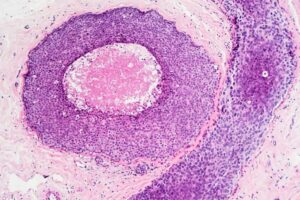
DCIS: (ductal carcinoma in situ) Tumor cells are confined to the mammary ducts. No invasion is seen (photographed by US board certified surgical pathologist).
Non-pathological DCIS is so common, in fact, that in autopsy studies of healthy women in their 40s who died in car accidents, 40% were found to have evidence of DCIS in at least one area of their breast tissue. In the majority of cases, the abnormality remains dormant in the tissue and half of these tiny growths go away without any intervention.7
Yet many women who have DCIS are choosing not to just to get a mastectomy, but to get a bilateral mastectomy and have both breasts removed.8 One study showed that though many women diagnosed chose to get radical treatment, death rates were similar over 10 to 20 years as the women who had no treatment or who were never diagnosed.9
This lends credibility to a few things: (a) the belief by many non-Standard-of-Care docs that the body is constantly metabolizing carcinomas, and toxic or radical treatment is inappropriate; (b) that breast cancer may not be the threat to health that we have been lead to believe that it is; and (c) that the body has a powerful immune system that almost always does the job, especially on very early-stage cancers.
In fact, some of the holistic doctors I’ve researched with worldwide feel that people have a detectable cancer of some kind an average of 4 times in a lifetime. Obviously, in most cases, the immune system breaks it down, and you never learn you had a tumor.
In fact, I developed a large, non-cancerous tumor under my arm when I was 12 years old. Many years later, I adopted a nutrient-dense, mostly raw diet, and the tumor disappeared.
Use this information to motivate you to eat an alkaline, plant-based diet rich in greens. Take a high-quality turmeric supplement and oil-based Vitamin D3. Avoid alcohol, sugar, processed food, and any animal product that isn’t organic, free range, grass fed, or wild caught. Eat real food, mostly plants.
Everyday Breast Cancer Risks
Life in western society is rife with cancer risks besides just the Standard American Diet, but there are some lifestyle risks specific to breast cancer that you should know.
Deodorant
The active ingredient in most commercial deodorant is aluminum. Aluminum works by forming a temporary plug within the sweat ducts that stop the flow of sweat to the surface of the skin. Some studies suggest that if aluminum based products are left on the skin near the breast, it may be absorbed and cause estrogen-like hormonal effects. High estrogen has been shown to promote breast cancer cells, so some scientists have suggested that aluminum-based compounds may have a key role in this.
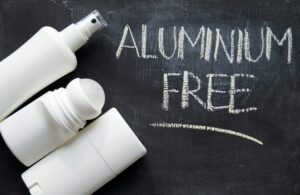
Aluminum plugs sweat ducts and may cause estrogen-like hormonal effects, leading to breast cancer
Other toxic compounds in most commercial deodorants are parabens. Parabens are preservatives that mimic the activity of estrogen. You can easily identify parabens by name when you look at the labels. Look for: methylparaben, propylparaben, butylparaben, or benzylparaben.
I stopped using commercial deodorant 15 years ago. Now I use a crystal stick from the health food store. Other people like a coconut-oil based deodorant. Your body adjusts, and most people will not suddenly have body odor.
Bras
I interviewed medical doctors Sydney Singer and Soma Grismaijer, who authored a book called Dressed to Kill: The Link Between Breast Cancer and Bras. They studied over 4,000 women and concluded that women who do not wear bras have a dramatically lower risk of breast cancer than women who do wear them. Women who wore their bras 24 hours a day had a 3 out of 4 risk of developing cancer. Women who wore their bras 12 hours a day (half the time) had a 1 out of 7 risk while women who rarely if ever wore bras had a 1 out of 168 chance of getting breast cancer.10
Why? Wearing a tight fitting bra can cut off lymph drainage, making us less able to excrete the toxins we are exposed to on a daily basis.
Underwire bras and those that are very constricting have been correlated with breast cysts and lumps. In his book The McDougall Program for a Healthy Heart, Dr. John McDougall stated, "After repeated bouts of inflammation, the breasts develop scar tissue in many places, and some of the milk ducts become plugged, forming cysts. Fibrocystic breast disease, not surprisingly, is associated with a higher risk of breast cancer."11
I wear camis and tank tops under my shirt and rarely wear a bra. When you must wear one, avoid tight ones and underwires!
TSA Scanner Radiation
You have a right to not be radiated in order to get on an airplane. Backscatter scans use ionizing radiation, the same used in x-rays, that increase your risk of cancer. X-rays send high-energy radiation to the body and record how much passes through it.
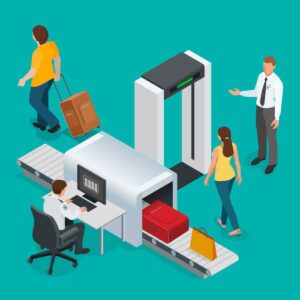
Radiation going through scanners is significant, despite what TSA agents say
TSA Agents have told me for years that the levels of radiation are negligible in their scanner. I do not let TSA agents make my health choices for me, and I “opt out” for the pat-down every time. Turns out that’s a good idea, as recent evidence shows what I’ve always suspected: that radiation going through the scanners is significant. If you travel a lot, this is important! Other on-board sources of radiation are inescapable.
High Sugar, Low Oxygen
Sugar is the food of cancer. Nothing you do will have a bigger impact on your cancer risk, besides perhaps chemical exposure or phenomenally high chronic stress, than how much sugar you eat. Eating an apple does not cause cancer. Drinking a glass of apple juice, however, gives you the sugar of 8 apples and none of mitigating fiber. Your risk may be even worse if you’re eating refined sugars or chemical sweeteners.
At the same time, the way to starve your body and create a perfect climate for cancer to grow is in anaerobic conditions: thick blood, little water, a clogged and sluggish colon, processed food, lots of meat products, sugar, white flour, and alcohol. These all skyrocket your cancer risk and cause cancer cells to flourish.
But where sugar feeds cancer, oxygen kills it. So how do you get more oxygen? Exercising. Deep breathing. Eating alkaline, oxygenating foods (greens, plant foods). Drinking low-fruit green smoothies, no-fruit green juice, and/or large salads, every day!
You can also visit holistic clinics where they have methods of delivering oxygen to the body, such as hyperbaric oxygen chambers, ozone treatments, and IV drips. (I’ve got a printable list of thermography clinics in all 50 states, available for download, below. Ask one near you if they also offer these treatments. Vitamin C IV infusions are also so powerful as an anti-cancer measure that some insurance companies now pay for them.)
Emotion Suppression
Don’t be a “stuffer!” It’s important, to decrease your cancer risk, that you learn to express, metabolize, and release negative emotions. The University of Rochester and Harvard School of Public Health followed 729 individuals over 12 years and found a 70 percent increase in cancer deaths for those who scored highest in suppressing emotion.12
Another study concluded if people had extremely low “anger scores” but were suppressing anger, they were more likely to have cancer and a rapid progression of the disease.13 A California study showed that when women openly express their anger, their survival rate at least doubled as opposed to women who suppressed it.14

To decrease your cancer risk, learn to express, metabolize, and release negative emotions
In other words, don’t bottle up your feelings! As Dr. Jeanette Raymond PhD. puts it, “The stress caused by suppression releases massive amounts of hormones that damage the natural cycle of cell growth and death, leading to cancer ... The repression of emotions, especially anger, appears to be a major factor that contributes to chronic stress, which stimulates the production of cancer cells.”15
Clear negative emotions by metabolizing, reframing, and releasing them! (See my podcast on iTunes, Vibe with Robyn Openshaw. Episode 3 and Episode 4 are particularly helpful on this topic.)
Decide that you matter, and don’t “do for others” entirely at your own expense. Take care of you. Your family doesn’t need you to be a martyr. In fact, they need to learn from you about boundaries, about self-esteem, and about living life in joy. Your feelings matter. How others treat you matters. Your self-esteem matters. Your health matters. It’s not “selfish.” YOU MATTER.
We All Have Cancer
We all have breast cancer! That is, your body produces about 50,000 malignant or malfunctioning cells every day. Generally you have a detectable mass when you have about a billion cancer cells, and they begin to organize and develop a vascular system or other self-sustaining systems.
Your immune system has been managing this every day of your life! “Having cancer” just means a mass or malignant overgrowth has been detected, which is a fundamental failure of the immune system. No surgery, radiation, or course of chemotherapy can help your immune system, and in fact all of them harm your immune system. There are many clinics all over the world that detect levels of toxicities (such as heavy metals), detoxify the body, rehabilitate the immune system, and help you resolve toxic emotional situations that may have led to cancer getting the upper hand.
Surgery, chemo, and radiation are not the “right” way to treat cancer; they are simply options, given a monopoly in the Western medical world where “Standard of Care” is dictated by insurance codes.
In most diagnoses, there is no urgency; a cancer has been growing for an average of 8 years when by the time it's detected. Slow down, breathe, research, and learn before making panicked decision. You have time.
We’ve covered a lot of information! To make this actionable for you, I’ve made a printable summary for you, along with a list of thermography clinics all across the US!
Get your 10% off coupon to order your Bosmeric here (4 anti-inflammatory plant-based substances) and get a FREE oil-based Vitamin D and free shipping. These are my two everyday, go-to supplements to keep my cancer risk low.
LISTEN to these Vibe podcast episodes with breast cancer experts:
- Episode 72: Heal Breast Cancer Naturally: Interview With Dr. Veronique Desaulniers
- Episode 84: Bras And Breast Cancer: Interview With Sydney Singer and Soma Grismaijer
- Episode 130: Breast Cancer Detection: Mammography Vs. Thermography with Dr. Felice Gersh
- Episode 135: Breast Imaging And Detection: It's Not What You Think It Is, with Dr. Robert Sheeler, MD
- Episode 114: Naturally Restore Your Hormones And Rhythms with Dr. Felice Gersh

Disclosure: This post may contain affiliate links that help support the GSG mission without costing you extra. I recommend only companies and products that I use myself.
Resources
- U.S. Breast Cancer Statistics | Breastcancer.org. (2016, September 30). From https://www.breastcancer.org/symptoms/understand_bc/statistics
- ANH-USA. (2014, April 22). "The Breast Cancer Industry Is Deceiving Women." From https://healthimpactnews.com/2014/the-breast-cancer-industry-is-deceiving-women/
- Rafatery, J., & Chorozoglou, M. (2011, December 8). Possible net harms of breast cancer screening: Updated modelling of Forrest report. From https://www.bmj.com/content/343/bmj.d7627
- Aschwanden, C. (2015, October 6). "What If Everything Your Doctors Told You About Breast Cancer Was Wrong?" from https://www.motherjones.com/politics/2015/10/faulty-research-behind-mammograms-breast-cancer
- Epstein Samuel S., Barbara Seaman, Rosalie Bertell "Dangers and Unreliability of Mammography: Breast Examination is a Safe, Effective and Practical Alternative," by , International Journal of Health Services, volume 31(3):605-615, 2001.
- Zuckerman, D., Ph.D. (2015). DCIS: "Mostly good news - Stop Cancer Fund." From https://www.stopcancerfund.org/p-breast-cancer/dcis-mostly-good-news/
- Killorian, Georgina (2015). "The Top Ten Things You Can Do To Prevent Cancer." Pritikin.com. From https://www.pritikin.com/your-health/healthy-living/prevention/225-the-top-10-things-you-can-do-to-protect-yourself-against-cancer.html
- Stein, R. (2015, August 20). "Study Suggests Some Treatment For Early Breast Cancer Is Unnecessary." From https://www.npr.org/2015/08/20/433257729/study-suggests-some-treatment-for-early-breast-cancer-is-unnecessary
- Graedon, J. (2015, August 27). "Big Study Raises Questions about Best Treatment for DCIS" - The People's Pharmacy. From https://www.peoplespharmacy.com/2015/08/27/big-study-raises-questions-about-best-treatment-for-dcis/
- Singer, S., & Grismaijer, S. (1995). Dressed to kill: The link between breast cancer and bras. Garden City Park, NY: Avery Pub. Group.
- Lancet 1999 May 22;353(9166):1742-5 "Risk of breast cancer in women with palpable breast cysts: a prospective study." Edinburgh Breast Group. Dixon JM, McDonald C, Elton RA, Miller WR, Edinburgh Breast Unit, Western General Hospital, UK
- Chapman, Benjamin P et al. Emotion suppression and mortality risk over a 12-year follow-up. Journal of psychosomatic research vol. 75,4 (2013): 381-5. doi:10.1016/j.jpsychores.2013.07.014
- Haider, P. (2014, September 17). "The Connection Between Anger and Cancer" | Relax Into Success. From https://paulhaider.wordpress.com/2014/09/17/the-connection-between-anger-and-cancer/
- The Link Between Cancer and Unexpressed Anger. (n.d.). From https://www.alternative-cancer-care.com/cancer-anger-link.html
- Raymond, J., Ph.d. (2015, October 14). "Melanoma: How Repressing Anger Can Cause Cancer." From https://www.goodtherapy.org/blog/stress-due-to-repressed-emotions-leads-to-melanoma
Posted in: Health Concerns, Holistic Care


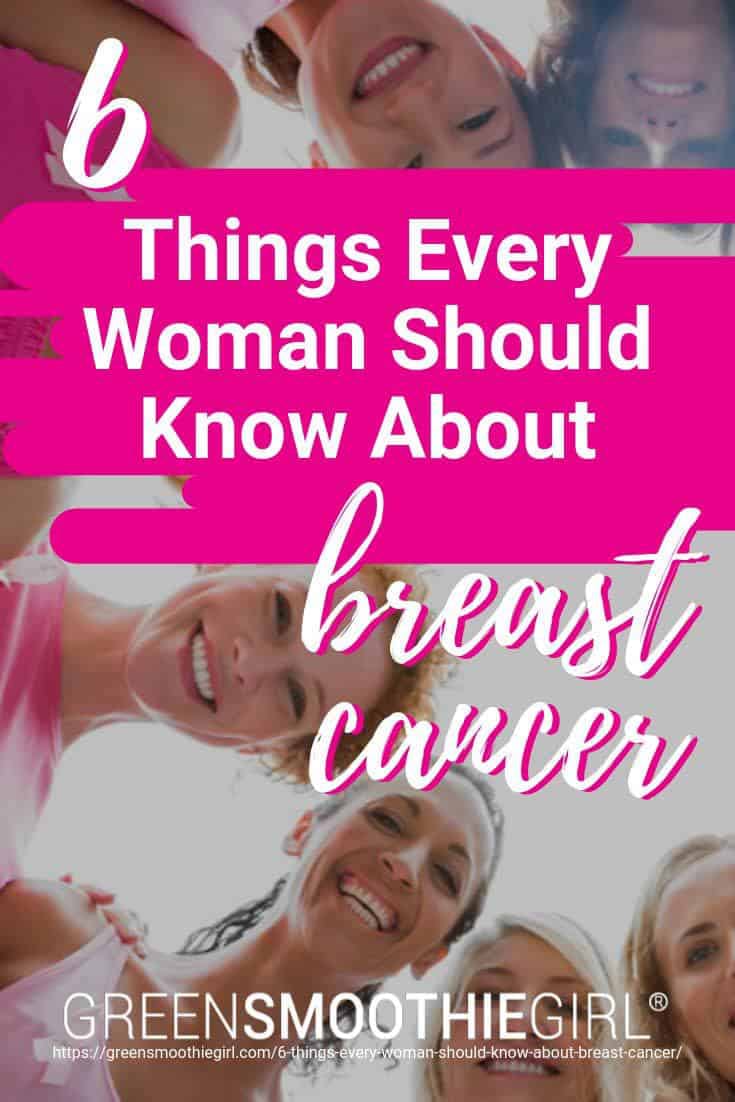













Interesting article. Thank you for the information. I do think that the advice of not wearing a bra all of the time is very limiting. I am a 32 DDD (no implants) and to not wear a bra would be gross, uncomfortable, extremely wiggly, and due to my age my breasts would be at my belly button. I will, however, stop wearing one at night and and wear a cami for as long as I can during the day. So, thank you for the advice.:)
When will the ultimate minerals be available again?
I love mine and I have run out. I can’t find anyone who sells it.
Lissa we have ultimate minerals, not sold out! Due to 800 people taking advantage of our big bonus package for our Lifetime Detox program, we are briefly out of stock on a few other things though.
I tried to get the free information, put in my email and required information and an ERROR came up.
“ductal carcinoma in situ”. is essentially the cancer is sitting in the lymph duct. the lymph system has no pump versus the circulatory system does have a pump. The only way lymph drainage is moved along is my movement, exercise or massage. more esp lack of exericise. . we don’t get cancer of the lymph nodes in our arms and legs d/t a lot of movement. the chest area has very little movement . also there is taboo getting a massage that the breast area is off limits, when in fact that is where its most need. Any first time massage of the breast and underarms is going to be sore. so have somebody do a deep tissue massage on the breast all over, once a month.is best. Not a soft sensual massage, but a deep massage. there are books about this and you tube videos, including one by Suzanne Somers
“Over 85 percent of the lymph fluid flowing from the breast drains to the armpit lymph nodes. Most of the rest drains to the nodes along the breastbone. Bras and other external tight clothing can impede flow…the nature of the bra, the tightness, and the length of time worn, will all influence the degree of blockage of lymphatic drainage. Thus, wearing a bra might contribute to the development of breast cancer as a result of cutting off lymphatic drainage, so that toxic chemicals are trapped in the breast.”(12)
Underwire bras those that are very constricting have been correlated with breast cysts and lumps. Dr. John McDougall stated, “After repeated bouts of inflammation, the breasts develop scar tissue in many places, and some of the milk ducts become plugged, forming cysts. Fibrocystic breast disease, not surprisingly, is associated with a higher risk of breast
Good info about massage! On it!
This is such a great article, so informative, reassuring and empowering ! ! ! I know several women who have been treated for breast cancer and believe strongly in the “standard” course of treatments, i.e. surgery, chemo, etc. I wonder if this is because they have experienced the terror of a cancer diagnosis and been led to believe that surgery, chemo, etc. was their only choice in order to save their lives. I think it’s important to get this kind of information out so that people know that there are options.
Hello Robin,
As a former dentist and customer/follower of yours I was surprised you did not mention the strong correlation between breast cancer and root canals, cavitations of extraction sites, caries under crown and bridge work etc. Do me a favor check out Bob Dowling at the North Carolina Institue of Technology and a book written about his findings called Am I Dead? … or do I just feel like it by Fred Hughes. It is a must read and in my years as a dentist I truly believe in this mans research and work. With thermal imaging the breast cancer should be on the same side as the caries or dental issues such as an old root canal. The neurotoxins from the pathogens inhibit the cancer/tumor regulating proteins and genes. I know that you are aware of holistic dentistry so again surprised that the article did mention anything of this research. Check that book out and what Robert Dowling has found. Take care. Shawn
Shawn,
You’re right, of course, and I’ll update the information. I have read Dowling’s book and appreciate you bringing it up here! Thanks for writing.